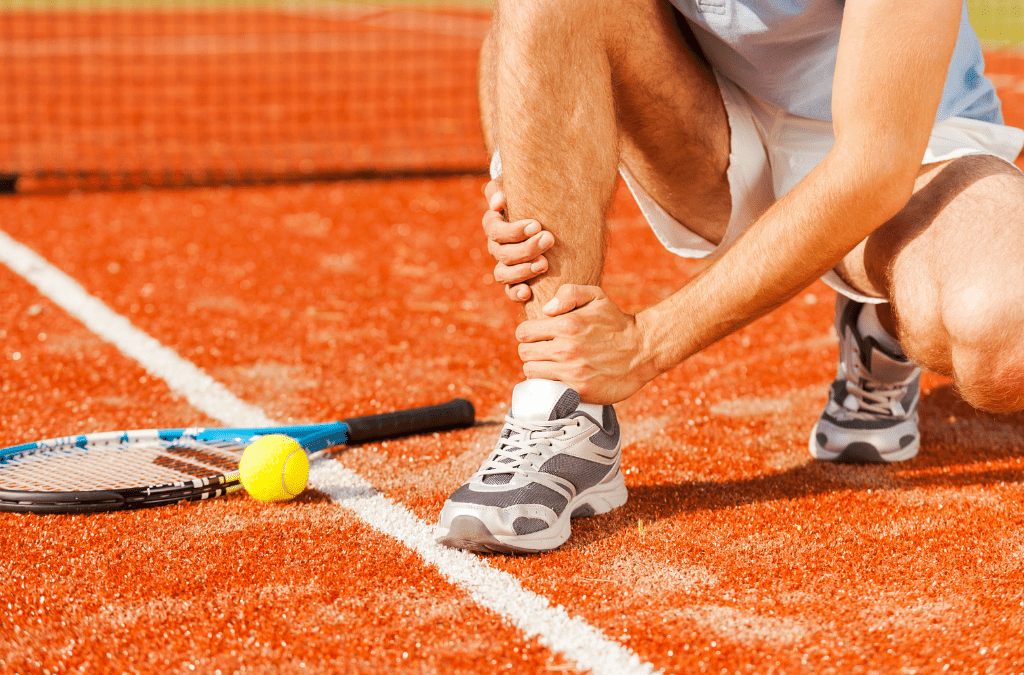Tennis is more than just a game, it’s a passion that demands agility, precision, and endurance. Yet, with every serve and volley, there’s a risk of developing tennis injuries that can sideline even the most dedicated players. Whether you’re practicing on a sunny afternoon or competing in a high-stakes match, understanding the potential pitfalls and knowing how to treat them is important for a long and healthy tennis career.
Tennis Elbow (Lateral Epicondylitis)
Tennis elbow, or lateral epicondylitis, is perhaps the most notorious injury associated with the sport, affecting not just athletes but anyone involved in repetitive arm and wrist activities. This overuse injury is characterized by pain and tenderness on the outside of the elbow, stemming from strained forearm muscles that damage tendons. Addressing this issue effectively involves a multifaceted approach:
- Physical Therapy: Custom exercises aimed at strengthening and stretching the forearm muscles.
- EPAT/Shockwave Therapy: A non-invasive treatment that uses pressure waves to stimulate healing in injured tendon tissues.
- Preventive Strategies: Including proper technique adjustments and equipment changes to reduce stress on the elbow.
Rotator Cuff Tendinitis
Rotator cuff tendinitis is a common issue for tennis players due to the frequent high-speed arm movements required during serves and volleys. This condition involves inflammation of the shoulder tendons, leading to pain and restricted movement. Here’s how you can effectively manage and treat rotator cuff tendinitis:
- Chiropractic Adjustments: These can help realign the shoulder joint and reduce tension in the affected muscles.
- Rehabilitation Exercises: Targeted exercises designed to strengthen shoulder muscles and improve flexibility.
- Sports Medicine Consultation: Early intervention by specialists who can provide comprehensive care plans tailored to the specific needs of tennis players.
Meniscus Tear
A meniscus tear is a common yet significant injury for tennis players, occurring from the twisting motions often required during play. The knee’s meniscus acts as a cushion between the thigh and shin bones, and when it’s damaged, it can lead to pain, swelling, and mobility issues. Here’s how to approach treatment:
- Surgical Options: Depending on the tear’s severity, surgery might be necessary to repair the meniscus. This is typically followed by a structured rehabilitation program.
- Non-Surgical Treatments: For less severe tears, treatments may include physical therapy to strengthen the surrounding muscles and improve joint stability.
- Rest and Gradual Return to Activity: Allowing time for the injury to heal naturally is crucial, paired with a gradual reintroduction to activity under professional guidance.
Ankle Sprains
Ankle sprains are frequent injuries in tennis due to sudden stops, turns, and jumps that are integral to the sport. Proper treatment not only aids in recovery but also prevents future occurrences. Here’s how to effectively manage an ankle sprain:
- Bracing and Support: Utilizing ankle braces can stabilize the joint, allowing it to heal while minimizing the risk of further injury.
- Physical Therapy: Exercises tailored to restore flexibility, strength, and balance are vital for a full recovery.
- Platelet Rich Plasma (PRP) Therapy: For severe sprains, PRP therapy can be considered to accelerate healing by using the body’s own growth factors.
Stress Fractures
Stress fractures are small cracks in the bone that often occur in tennis players due to repetitive force or overuse, particularly in the lower leg and foot. Here’s an effective management strategy:
- Diagnostic Imaging: Early identification through appropriate imaging is crucial to confirm the presence and extent of the fracture.
- Rest and Recovery: Adequate rest is essential to allow the bone to heal, often requiring a break from tennis.
- Nutritional Support: Calcium and vitamin D are important for bone health, and ensuring proper intake can aid in recovery.
- Gradual Return to Play: Once healing is confirmed, slowly increasing activity levels under professional guidance helps prevent recurrence.
These treatments, coupled with adequate rest and possibly the use of braces, can help manage symptoms and accelerate recovery, keeping players both active and pain-free on the court.
Effective Recovery from Tennis Injuries
Avid Sports Medicine understands the challenges that tennis players face, whether they’re swinging rackets in San Francisco, Oakland, or San Jose. Our tailored treatments, from physical therapy to advanced options like stem cell therapy, are designed to address the specific needs of athletes suffering from common tennis injuries like tennis elbow, rotator cuff tendinitis, and meniscus tears. By focusing on proper diagnosis, personalized care plans, and innovative treatment techniques, we help you return to your best form. Ready to get back on the court? Schedule your appointment today and experience comprehensive care at Avid Sports Medicine.

